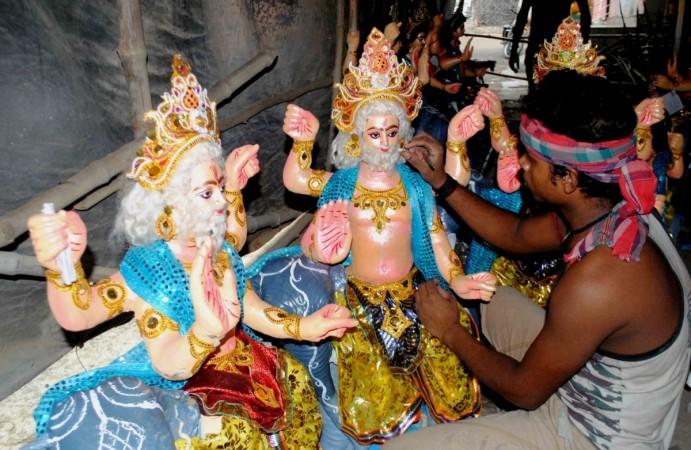
Vishwakarma is one of the better-known gods in the Hindu pantheon, and probably one of the most relevant ones in this day and age. And as Vishwakarma Puja rolls around, here's a quick look at who this god is and why he is worshipped across the country.
When is Vishwakarma Puja?
Vishwakarma Puja falls on Kanya Sankranti every year, which is just after the Ganpati festival in India. It usually falls in the month of September or October. This year it is on 17 September. In some places, Vishwakarma Puja is also celebrated the day after Diwali, which means it falls on October or November.
The Vishwakarma Puja on Kanya Sankranti is usually celebrated in the states of Uttar Pradesh, Bihar, and Jharkhand in the north, Karnataka in the south and Assam, West Bengal Odisha and Tripura in the east in honour of Vishwakarma, who is considered the divine architect among Hindus.
Why is Vishwakarma worshipped?
The name Vishwakarma, in the earliest days of Hinduism, was used to be attributed to Brahma. Indeed, the story of the universe being born out of Vishwakarma's navel mirrors the story of Brahma giving birth to the universe. The name would later be used to refer to other gods as well.
Only in the puranas that come later in the chronology of Hinduism is Vishwakarma identified as the divine architect. He is credited with building first the Heaven (Swarga), and then Lanka -- the City of Gold that would come to be ruled by Ravan and destroyed by Hanuman in what is the modern-day Sri Lanka -- and the city of Dwarka, where Lord Krishna would come to live.
He is worshipped by all artisans, architects and engineers as the presiding deity of their trade and craft. Indeed, there is hardly a factory in India that does not have a photo of Vishwakarma in it. He is also worshipped by mechanics, welders and other people with similar trade, who pray to him for better functioning of their tools and smoother working.
Vishwakarma Puja also entails the flying of kites in many regions of India.

















